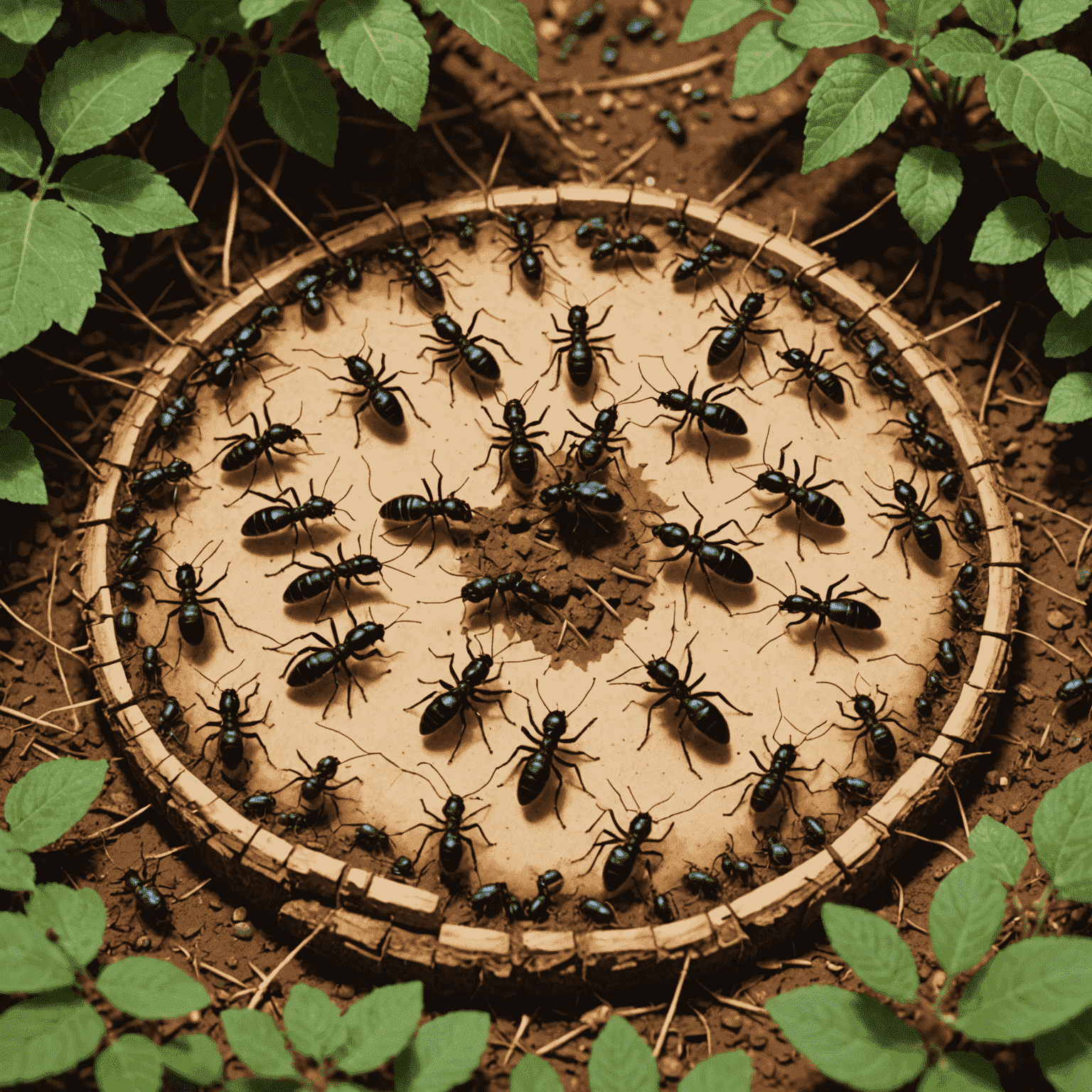Ant Colony Relocation: A Remarkable Journey

In the intricate world of social insects, few phenomena are as fascinating as the relocation of an entire ant colony. This complex process, driven by collective decision-making and executed with military precision, offers a window into the remarkable capabilities of these tiny creatures.
The Decision to Move
Ant colonies don't relocate on a whim. The decision to move is typically triggered by environmental factors such as:
- Overcrowding in the current nest
- Depletion of nearby food sources
- Threats from predators or competing colonies
- Damage to the existing nest structure
Once these factors reach a critical point, scout ants are sent out to explore potential new nest sites. These scouts assess various locations based on criteria such as size, safety, and proximity to resources.
The Quorum Process
Perhaps the most intriguing aspect of ant colony relocation is the decision-making process, known as "quorum sensing." This democratic process involves:
- Scout ants visiting potential new nest sites
- Evaluating the quality of each site
- Recruiting other ants to visit promising locations
- A gradual build-up of ants at the most suitable site
- Once a quorum is reached, the colony commits to the move

The Great Migration
With the decision made, the colony embarks on a perilous journey. This phase of relocation presents numerous challenges:
1. Transporting the Queen
The queen, being the heart of the colony, must be moved safely. In some species, she is carried by worker ants. In others, she may walk to the new nest, surrounded by a protective formation of workers.
2. Moving Eggs, Larvae, and Pupae
The future of the colony – eggs, larvae, and pupae – must be carefully transported. This delicate cargo requires gentle handling and protection from the elements.
3. Transferring Food Stores
Colonies often move stored food to the new location, ensuring they have resources to sustain them as they settle in.
4. Navigating Terrain and Avoiding Predators
The journey between nests can be fraught with danger. Ants must navigate varied terrain while remaining vigilant against predators attracted by the vulnerable moving colony.

Settling Into the New Home
Upon reaching the new nest site, the colony faces the task of settling in:
- Expanding and modifying the new nest structure
- Establishing new pheromone trails to food sources
- Reorganizing the social structure within the new space
- Defending the new territory from competitors
This process of establishment can take anywhere from a few days to several weeks, depending on the size of the colony and the conditions of the new nest.
A Testament to Collective Intelligence
The ability of ant colonies to successfully relocate is a remarkable demonstration of collective intelligence. Without centralized control, thousands of individual ants work together to make complex decisions and execute challenging tasks. This process showcases the power of swarm intelligence and offers insights that could inform fields ranging from robotics to urban planning.
As we continue to study these fascinating creatures, we gain not only a deeper appreciation for the complexity of nature but also valuable lessons in cooperation, adaptability, and collective problem-solving.